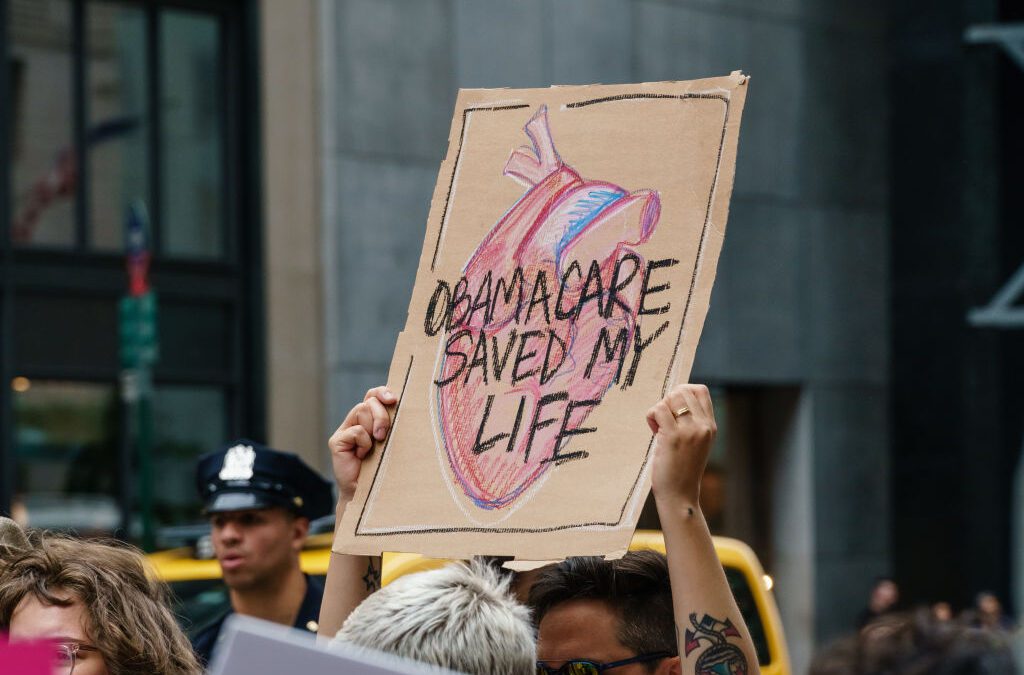
The law ensured that 543,000 Floridians were able to keep their health insurance, reduced the cost of insulin for over 90,000 seniors, and incentivized several manufacturers to invest in the state and create more clean energy jobs. (Graphic by Francesca Daly)
One year ago today, the Inflation Reduction Act (IRA) was signed into law.
The legislation represented the largest-ever investment in fighting climate change, lowered health care and prescription drug costs, raised taxes on corporations, and boosted funding for the Internal Revenue Service to go after wealthy tax cheats.
The bill was passed with only Democratic votes, with every Florida Republican in Congress voting against it, despite its potentially transformative impact on the economy and the nation’s clean energy infrastructure.
“The Inflation Reduction Act was one of the most consequential pieces of legislation passed in decades, and in just one year it’s already paying huge dividends for the American people, for our economy, and for our climate,” Senate Majority Leader Chuck Schumer (D-NY) said in a statement. “Democrats are proud of the progress we’ve made in implementing our agenda, and we will keep working until every American feels the benefits.”
Here are some highlights of how the Inflation Reduction Act has impacted Florida:
Lower Health Care and Prescription Drug Costs
The Inflation Reduction Act extended generous subsidies that helped make Affordable Care Act (ACA) health insurance plans more affordable for working- and middle-class families.
Those subsidies were introduced as part of Biden’s American Rescue Plan of 2021, and were set to expire at the end of last year, but the IRA extended them through the end of 2025.
Roughly 543,000 Floridians were set to lose their individual coverage and become uninsured had those subsidies expired at the end of 2022, but thanks to the Inflation Reduction Act, those people got to keep their insurance.
The IRA also reformed Medicare to lower drug costs for many of the roughly 4 million Florida seniors with Medicare Part D coverage, which covers prescription drugs.
For example, beginning this past January, all vaccines covered under Medicare Part D are free, and the bill implemented a $35 monthly cap on insulin for Medicare recipients.
As a result, over 90,000 Florida seniors on Medicare who use insulin are now charged no more than $35 per month for an insulin prescription.
The IRA will also implement a $2,000 cap on Medicare recipients’ annual out-of-pocket prescription drug costs, beginning in 2025. In Florida, an estimated 1.5 million seniors are expected to save $401 a year each due to this provision, according to an analysis by the US Department of Health and Human Services.
Fighting Climate Change and Saving Families Money on Energy
Arguably the most critical element of the IRA is its provisions to reduce emissions that cause climate change and drive extreme weather events. The law aims to do this by establishing a mix of tax credits for companies and rebates for consumers in order to make the manufacturing and consumption of clean energy technologies and products cheaper.
In other words: by making clean energy—like solar, wind, and hydropower—cheaper to produce and use, the IRA seeks to hasten the transition away from fossil fuels that are one of the biggest sources of emissions.
For example, under the law, manufacturers get subsidies for building electric vehicles (EVs) and renewable energy products, and utilities get credits for choosing solar and wind energy over fossil fuel plants.
The law’s various measures are expected to lead to a clean energy jobs boom and the IRA could create up to nine million jobs over the next decade. In Florida, the IRA could create as many as 84,592 jobs by 2030, according to data from the Rocky Mountain Institute.
In Florida, several manufacturers have already taken advantage of the IRA’s incentives.
JinkoSolar, a solar power manufacturer that employs 250 people in Jacksonville and opened the doors of its facility roughly four years ago, is eying a massive expansion that will cost an estimated $52 million. Once this project is completed, the facility will employ roughly double the current number of workers.
Canadian solar power company, Polar Racking, has also announced plans to add two facilities to manufacture solar mounts in the United States, one of which will be located in Florida, near Jacksonville. The facility is expected to reach commercial production by the end of 2023, according to Janet Janzen, marketing manager with OYA Ventures, the parent company of Polar Racking.
The IRA also provided $80 billion in financial rebates for millions of households to adopt those clean energy products, such as electric vehicles, solar panels, and more efficient heat pumps.
If consumers claim all the subsidies offered in the law, they could save more than $1,800 on their annual energy bill on average, according to an analysis by Rewiring America, a climate analysis group.

What you need to know to enroll in the Affordable Care Act in 2025
Explore yours or your family’s specific healthcare options through the Affordable Care Act, find a health plan, and start a 2025 application now....

What’s new and what to watch for in the upcoming ACA open enrollment period
by Julie Appleby, KFF Health News It’s that time of year again: In most states, the Affordable Care Act’s annual open enrollment season for health...

5 places in Florida to donate clothes, shoes, and more
Decluttering your home can provide such a satisfying feeling of accomplishment. After sorting through all of your belongings and determining what...

8 Orlando hotels that pack as much fun as the theme parks
With waterslides, family arcades, playgrounds for the kids, and spas for mom and dad, these Orlando hotels will make your vacation unforgettable!...



